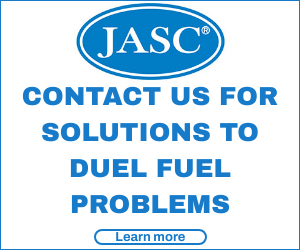Richard Walton of SSE (formerly Scottish & Southern Energy plc), spoke to participants in European Technology Development Ltd’s International Conference on Power Plant Operation and Flexibility, London, July 2018, on thermal transients and their impacts throughout the company’s fleet, suggesting more targeted inspections, monthly monitoring and reporting, trending and investigating, and the need for improved industry guidance.
Details of his presentation outlined what he called “up-shock” and “down-shock” events and impacts on the HP and IP systems (superheater and reheater).
The benefits became recurring conference themes:
-
- Better inspection scope forecasting.
- Reduced risk of on-load failure.
- Reduced risk of forced outage.
- Issue identification and reduced costs of both maintenance and inspection.
- A managed approach to life extension.
James MacArthur, a senior engineer in SSE’s pressure systems group, discussed the effect of UK grid demand on HRSG damage mechanisms. Running plants on demand is “arduous,” he stated, but one tactic is to “change the inspection philosophy.”
His example was a 735-MW plant with two HRSGs, recently converted from baseload to two shifting, commissioned in the mid-1990s, and experiencing 900 starts in the past three years.
He reviewed fatigue-related damage locations: reheater tube stubs, reheater outlet and inlet headers, and superheater headers.
For the inlet header, a combination of system stresses and poor attemperation led to corrosion fatigue failure (a common topic). He also reviewed pipework stress analysis, indicating that “even with all supports operating correctly, stresses in the header stubs are high.”
Problems in his example case were caused by “anomalous and excessive axial stress during operation.” Stress analysis showed inadequate supporting and restraint arrangement on the outlet manifolds. “Even with all supports operating correctly,” he stated, “stresses in the header stubs were high.”
He then turned to both single- and two-phase FAC (flow-accelerated corrosion), pointing out locations, mechanisms, detection, and consequences. “In a combined-cycle plant,” he summarized, “FAC typically occurs in the LP and IP evaporator circuits, HP economizers, and feed pipework.” He pointed out that typical locations in conventional plants are the feedwater heaters and systems, and for all plants in air-cooled condensers.
This leads to the need (common theme again) of reassessing the inspection strategy as well as the impacts of expected future operation (cycling).
ETD’s Feroza Akther followed MacArthur and reminded participants of the common impacts of cycling, including a note that owner/operators should also be aware of “higher fuel consumption during startups and shutdowns because of inefficient heat transfer and non-optimal heat rate.”
Therefore, owner/operators need to know the technical and financial impacts of converting baseload units to cycling, as well as the operating costs for current cycling units. Her presentation described both benchmarking and analysis for a large group of conventional and combined-cycle units.
The plant database included 30 conventional and 65 combined-cycle units from Europe, US, and Asia, all with at least seven years of O&M data, ages from one to 35 years operation, and net generation from 50 to 500 MW. Analysis included data for:
-
- Modifications.
- Damages attributed to operating conditions.
- Maintenance activities.
- Inspections.
- Availability and reliability factors.
Akther outlined ETD’s methodology of data analysis, statistical analysis, and normalization (to share best practices), plant condition analysis to assess relevant O&M events, and how to determine O&M costs for equivalent hot starts. This included performance indicators (equivalent forced and planned outages, availability, and reliability) and annualized non-fuel costs.
“The performance assessment of the plants operating in cycling mode has been performed,” she said, “by demonstrating the evolution of forced and planned outage factors during the plant life cycle—that is, starting from commissioning until the end of plant life.” She labeled the phases as commissioning (one to six years), useful life (six to 20 years), and wear-out (more than 20 years).
Hot start is defined in this study as an overnight shutdown of less than eight hours, with turbine metal temperatures above 750F. Warm start reflects weekend shutdown of up to 60 hours (390F). Cold start is anything greater than 60 hours (below 390F).
Based on analysis of these units, “it appears that the strongest indicator of combined-cycle annual O&M costs is the number of equivalent hot starts (EHS) that the unit has performed.”
“To minimize the economic impacts of cycling,” Akther explained, “it is crucial to create a well-balanced maintenance plan including proactive, predictive, and preventive programs.” This led to a discussion of advanced tools currently promoted including risk-based maintenance (RBM), condition-based maintenance (CBM), and reliability-centered maintenance (RCM).
Such programs are commonly discussed at these sessions. “If not already implemented,” stated Akther, “it will be extremely beneficial for the plants to consider these tools to achieve a well-balanced maintenance program.” Not surprising, perhaps, but reinforced.








